Gorilla .223 Ammo
Buy Direct: https://www.gorillaammo.com/
Colt Match Ammo (Black Hills)
At Midway in Stock
The concept of “match ammo” surprises some people. Guns go bang and the bullet makes a hole in whatever the gun is pointed at, right? Yes, and while almost all ammo will function and do some damage downrange, there is a huge variation to how precisely the ammo is manufactured. You can set the automated ammo machines for five rounds a minute or 500 rounds per minute. But at 500 rounds per minute, the precision of the ammo sharply declines. It takes time to make sure that powder is measured precisely, that primers are seated corrected, and that bullets are inserted and secured evenly. Handloaders know this, because they do all of these steps one at a time, when making “match quality” ammo, but with the high price of ammo these days, it has become profitable for more and more new manufacturers to get into the game of match ammo and produce some really amazing results. We were blown away by one of these companies, Gorilla Ammo, while testing the Ruger American .223 (1/2MOA), so we decided to pit that ammo up against a Colt-branded match ammo from Black Hills. The results will surprise you.
Our test rifle is a bit of an odd nut. It started its life as a standard Rock River LAR-15 with a 24” barrel and an A2 stock, meant for long range varmint hunting. Most of the rifle is still how it came from the factory, but we upgraded the upper with a StraightJacket from Teludyne Tech. We have done several articles on this system over the years, and it is truly amazing.
The reason we chose this particular rifle is because the StraightJacket doesn’t vary in its accuracy much after the barrel heats up. Whatever the base accuracy of the rifle, that accuracy should carry through even a couple magazines into shooting, even rapid fire. The StraightJacket keeps the barrel rigid and wicks heat from the chamber. That takes most accuracy-hurting variables out of the equation. This gun was ‘Jacketed before the new 4th Gen StraightJacket, so it has the gas tube inside the jacket, and the point of impact walks a bit for the initial shots as the gas tube expands, but once it is hot it stays at that point of impact indefinitely. This rifle seemed like a fitting platform to test ammo head-to-head, because you couldn’t argue that one was shot first and the other shot later. Our actual tests went back and forth between these two brands, some Hornady Match Ammo, and even some Fiocchi range ammo. Unlike some reviewers out there, we don’t just fire a group, take a picture and leave early for lunch. Our results cover over 200 rounds.
This is more of a photo essay than anything else, so please look through the photos and captions if you want the nuts and bolts of the tests. Overall, the Gorilla ammo outperformed both the Black Hills Colt and the Hornady, but not by much. It was the opposite for the chronograph numbers. Comparing extreme spread and standard deviation, the Black Hills Colt won. Ultimately, the actual accuracy results on any rifle are going to boil down to which ammo the gun liked more. Both Gorilla and Black Hills use Sierra bullets, but slightly different models and weights. Hornady makes their own bullets, and the 75 grain in our test ammo is similar in shape and ballistic coefficient to the two Sierras.
Human error of course played a factor in these tests as well. For instance, the Hornady groups weren’t really shot until the end of the day, and we only had one box left of it so we didn’t get to do any chronograph testing with it. If you notice, the targets tend to have three or four rounds close, with one or two “fliers” or “enhanced human error” shots. For an off-the-shelf, not tricked out AR, these are great groups. And remember, the Gorilla ammo shot into less than 1/2MOA with that Ruger bolt gun. Most people don’t shoot bolt guns in .223/5.56 for competition, so an off the shelf AR from a high-end manufacturer was appropriate. The StraightJacket was just there to level the playing field across our testing.
We are not only living in the golden age of firearms. This is also the golden age of ammo. Before Hornady basically invented the concept of precision ammo, we were all stuck with green and yellow box Remington that didn’t seem to shoot well in anything. You would do just fine with either of these new match grade offerings in the ammo market. And the Colt might even become collectible someday.
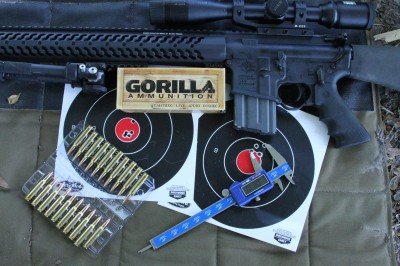
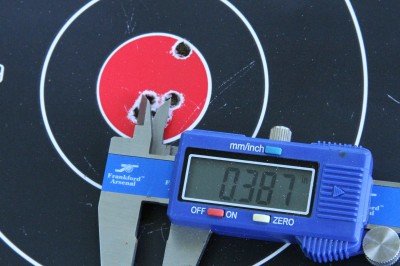
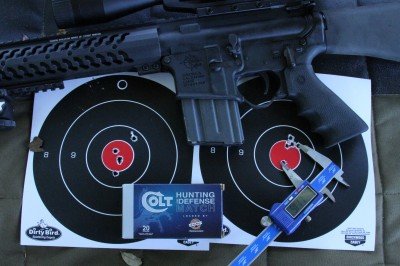
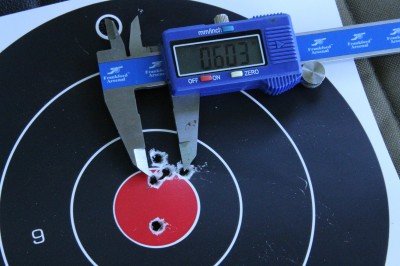
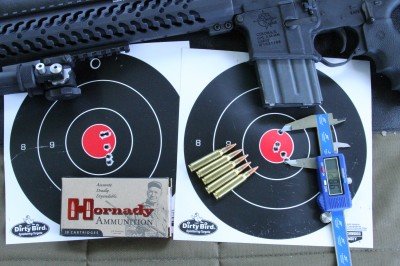
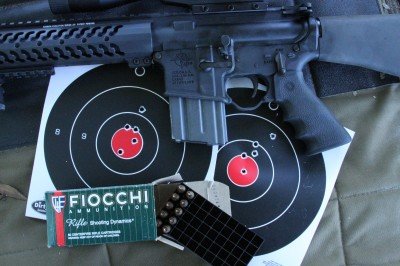
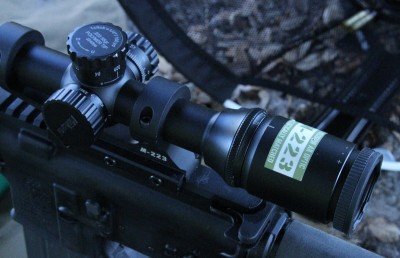
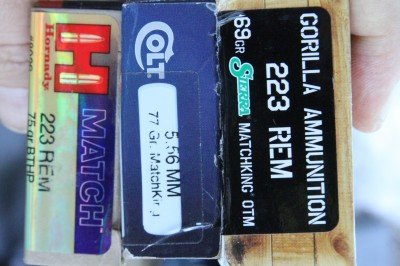
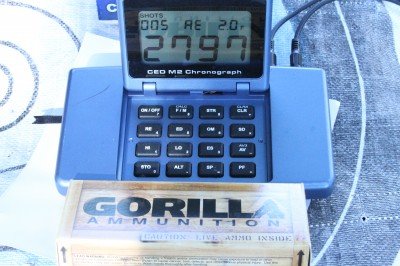
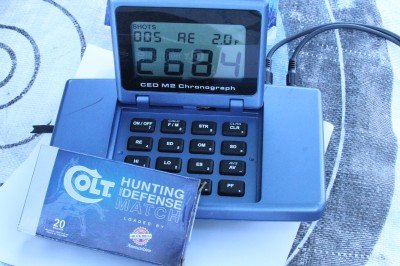
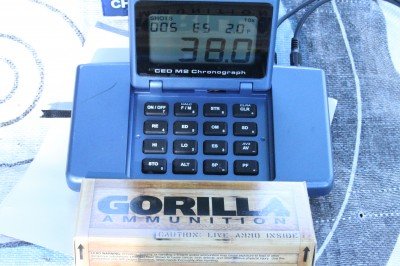
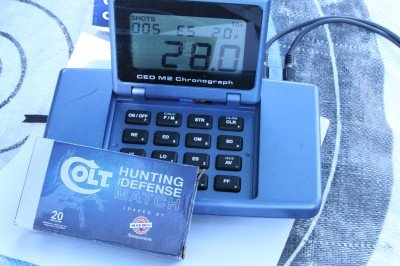
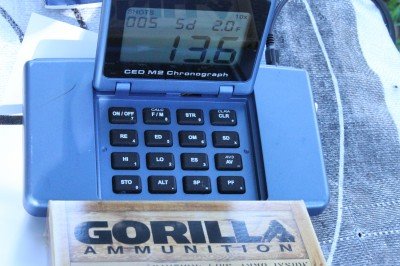
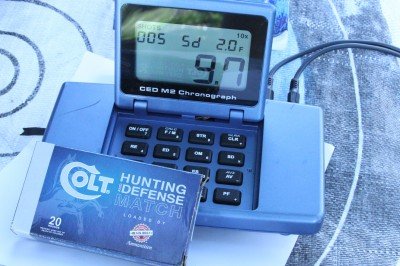
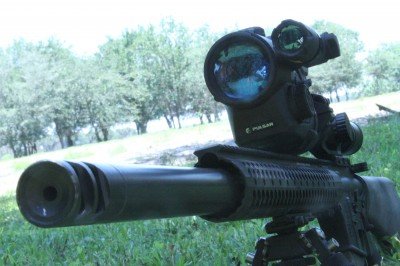
Yeah, that’s what i want to know also. It’s probably a 1-9 if it’s an older set up. you’d do an overall percentage better using a 1/7 with the 70+ grain bullets but 1/8 might even be better.
Good article, and this is the ‘right’ way to test for accuracy comparison.
The RR is a 1/7. It was set up for heavier grain bullets. I would think that the people who asked this question would assume that, since it is a long varmint gun.
No, by that logic you are saying that there are no long barrel varmint AR’s with a 1/9 or 1/8 inch twist? And, of course you’d be wrong. Or conversely that there are no short M4 standard military lightweight carbines WITHOUT a 1/9 twist??? But then why would one of my lightweight tac carbs have a 1/7 That’s why we ask. We’re not mind readers.
Plus twist rate for heavier bullets is not necessarily the traditional ‘cat’s meow’ for long range varmint hunting when trajectory is really more important than kinetic energy. That’s why you have some specialty “Varmint rounds in the 45 grain weight which work better in a 1/9 or(10) inch twist. Everybody ‘knows’ that, and usually these ‘set ups’ don’t need a swat type flash/comp and you also wouldn’t really really need the 70+ heavier bullets either, now would you, for the small critter varmints, that is?
Plus the ‘long range’ aspect of ‘varmint hunting’ is also a subjective assumption between many real ‘varmint’ hunters, of which i myself, am not. At least not of the four legged kind. So ‘assumptions’ aside. This certainly looks more like a tactical weapon than a straight varmint set up. It certainly doesn’t have an optimal scope ‘set up’? And you WERE shooting 55 grain bullets, weren’t you? So that’s why we ask. To know for sure.
I would think that the gun writer ‘experts’ on this forum would assume that you shouldn’t ‘assume’ anything when it comes to firearms, and give we humble ‘amateurs’, a break and not be snotty about it when we ask?
No surprise. It’s really not that hard to outperform Black Hills. As a handloader, I’ve measured everything I have instrumentation to measure with on Black Hills ammo and found nothing they do well. They use good bullets and that’s it. Most shooters view Black Hills as great ammo because most alternatives are just that bad. As mentioned… UMC, etc.
Good points. I used black hills to some extent because they always were cheaper than the other match ammo and i think that was their whole point. Match performance in a ‘cheaper round’ They actually were using reloaded brass at one point.
I’m going to argue with anybody anymore because there are so many variables between so many ‘experts’ that depend on any combination of equipment and personal skills that unless you have over 30 years of precision match and ‘sniper’ shooting, i don’t really pay attention too much anymore to what you say and just go with what i see and understand from my own empirical knowledge.
However, occasionally just to shut people up and take their money when some ‘expert’ would say you can’t have an accurate rifle without a ‘trigger’, i’d say ‘what’s in your wallet to prove you’re right? Then we’d take the same sub-moa AR-15 and switch out the match trigger group for a stock mil-spec one for when i shot–all other things being equal. Guess what?!
Anyway because i start with the barrel first, and not necessarily the ammo, that to me is the only important standard for sniping, for instance. Which by the way, is not the same ‘accuracy’ as precision match or game sniping. But the ‘bullet’ should be good, if you want expected performance. A good co-efficient boat tail all plus or minus a couple grains in weight almost always work well in a really good barrel.
Although this article was an ammo comparison, and a well done test and article, it seemed to digress to the barrel system. While it’s nice that it was designed to mitigate heat stringing in real sniping this doesn’t matter too much. You rarely need but one shot, and it takes more than two or three to heat the barrel up enough to make any significant difference in the outcome anyway in the overall bigger picture . Especially if it was cool outside. That’s the problem with this sort of ‘stuff” too many people who are really serious shooters become obsessed with the not so important aspects, at the expense of the definitely important parts.
Anyway, the article really didn’t do the Straightjacket system any justice. The company advertises sub moa–half inch, i think they mentioned– with ANY kind of ammo?! Which is what any good match/sniper grade sub moa AR barrel should do anyway.
So what was up with the Fiocchi group here? Surely it can’t be Straight Jacket’s SIXTEEN HUNDRED DOLLAR FREAKING upper?
By the way, I’ve got at least an 18 year old Olympic Arms 20 inch H-bar varmit upper and a free floated aluminum tube and i only take it out anymore when i want to scare myself and others. It has one me thousands in sidebets and it has it’s own place of honor in the ‘cave’. It’s a broach cut 1/8 barrel with an 11 degree end bevel and does literally put just about anything into one ragged hole at 100 meters.
One time i was at a club shoot and the discussion went to ‘ammo’ being the most important thing in accuracy so i said, ‘yeah, i got the most accurate special issue limited production top secret military 5.56 ammo in the WORLD! right here in my box. Noooo, they said, in awed reverence. So i took out a box of regular military Federal 55 grain XM193’s that even today go for around 10 bucks a box (oh, while i think of it, all these ‘moa’ tests should always include a couple military ammo lots)…..that had a special ink stamp(my own) on it that said TOP SECRET, and i loaded three rounds in the mag and sat down with my plain jane rifle, and popped three caps into a near perfect triangle with a half inch center to center @ the 100 m. target! And the crowd went wild!
Now, mind you, some of these guys were police and military and very good shooters. I divided up the rest of the box to three or four rounds each to the few i knew could shoot to ‘try it themselves in their own guns’. all of which were nice guns, but maybe only two had really good barrels. And their shot’s also did barely under an inch. The other fellas went under two inches. The general consensus was that “oh, they don’t really seem THAT more accurate than regular ammo?
Then one of them, also a police sharpshooter and competitive shooter who was already aware of my perverted sense of levity, and noticed the smile cracking at the corners of my mouth, came back and said, “Hey, why don’t you let me look a little closer at that shooting stick of yours, for a minute?”
Moral of the story. Nothing is as it seems, unless you believe it.
The difference between the 69gr Matchking used in the Gorilla, vs. the 77gr Matchking in the Black Hills might account for the accuracy difference, depending on the twist rate of the barrel. To the best of my knowledge, a 9″ twist is okay for 69gr bullets, but may be marginal for the heavier stuff. The twist rate wasn’t mentioned in the article. As far as “fliers” are concerned, if there were no fliers with the Ruger (1/2″ groups), why would there be shooter-induced errant shots with the AR?
Any idea what the barrel twist was?